Are you struggling to create the perfect tent layout for your upcoming event? Whether you’re planning a wedding, corporate gathering, or outdoor festival, the right tent arrangement can make or break your guests’ experience. This guide will show you how to tailor tent layouts for various event types, focusing on guest needs, tent styles, and functional areas. By the end, you’ll understand how to maximize space efficiency and create a seamless flow that ensures comfort and style for your customers.
Key Takeaways
- Effective tent layouts enhance event success by optimizing space, flow, and guest experience
- Different event types require unique tent setups tailored to specific needs and activities
- Customizing layouts involves considering accessibility, seating styles, and space requirements for attendees
- Integrating functional areas like dining, dance floors, and lounges is crucial for event flow
- Visual elements such as decor, lighting, and signage play key roles in enhancing tent layouts
Understand the Importance of Tent Layouts for Diverse Events
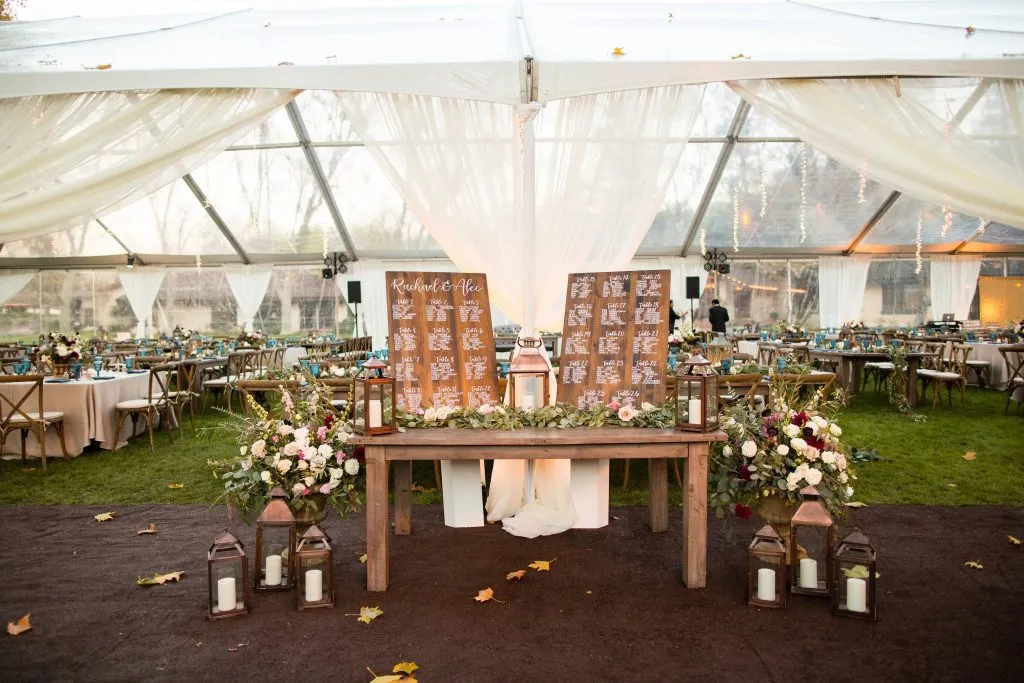
Tent layouts are a crucial element in event planning, shaping both the functionality and ambiance of a gathering. A well-designed layout enhances guest flow, maximizes space, and ensures a seamless experience. Whether hosting a wedding, corporate event, or private celebration, the right tent arrangement sets the tone for a memorable occasion.
The Role of Tent Layouts in Event Success
A thoughtfully planned tent layout transforms a simple space into a dynamic environment tailored to the event’s purpose. It dictates how guests interact with the space, ensuring comfort and accessibility while allowing for smooth transitions between different segments of the event. For instance, a wedding tent should include a designated dance floor, strategically arranged seating, and clear pathways for catering staff. In contrast, a corporate event might require an organized stage setup with audience seating that optimizes visibility and engagement. The layout should always prioritize convenience, efficiency, and an inviting atmosphere.
Customizing Layouts for Different Events
No two events are the same, and the layout should reflect the specific needs of the occasion. Weddings often require a balance between elegance and functionality, incorporating areas for dining, entertainment, and photography. Corporate functions, on the other hand, demand structured seating arrangements, presentation spaces, and breakout areas for networking. Social gatherings, such as cocktail parties or milestone celebrations, benefit from open-concept layouts that encourage mingling and interaction. By tailoring the layout to the event’s unique requirements, organizers can create an experience that feels both natural and engaging.
Key Considerations for an Effective Layout
Beyond aesthetics, a well-planned tent layout considers practical elements that contribute to guest comfort and event efficiency. The number of attendees plays a significant role in determining the spacing and arrangement of furniture, ensuring a balance between coziness and ample movement. Amenities such as stages, dance floors, bars, and buffet stations should be placed strategically to avoid congestion while maintaining accessibility. Additionally, proper lighting and audiovisual setup enhance the ambiance, creating an immersive experience that aligns with the event’s theme and purpose. Every detail should work harmoniously to facilitate a seamless and enjoyable event.
Enhancing the Guest Experience Through Thoughtful Design
A great tent layout goes beyond just structure—it influences how guests feel and interact throughout the event. A well-organized space fosters ease of movement, enhances social interactions, and ensures that every aspect of the gathering flows effortlessly. Whether it’s an intimate wedding or a large-scale corporate function, the right layout transforms a basic tent into an elegant, functional, and welcoming environment. By focusing on both aesthetics and practicality, event planners can create a setting that leaves a lasting impression on every attendee.
Analyze Guest Needs to Customize Tent Arrangements
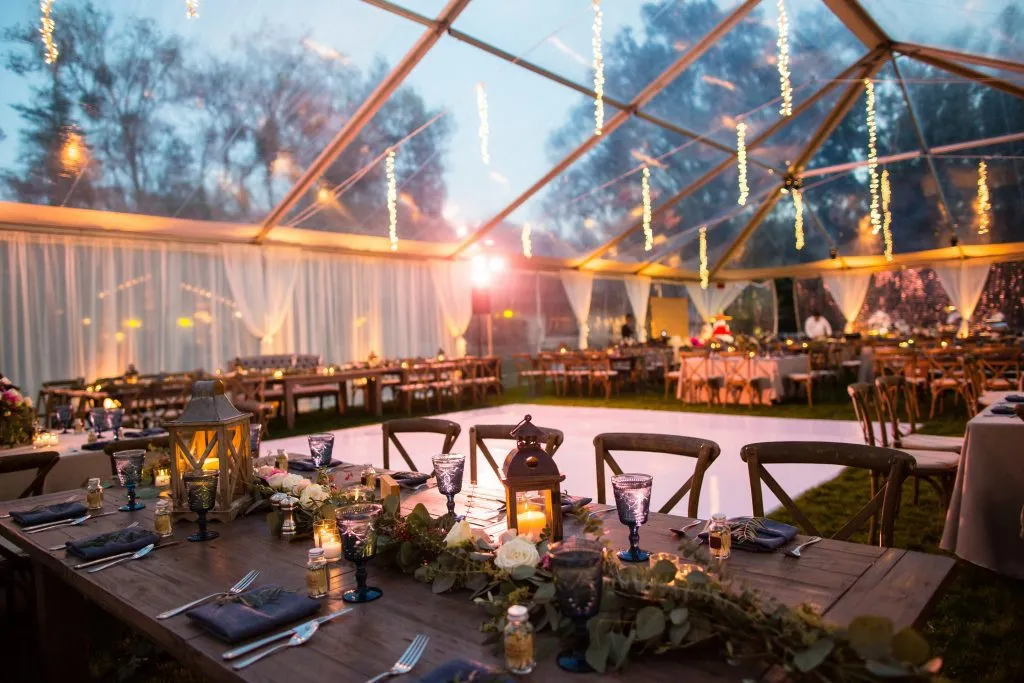
Customizing tent arrangements for various events requires careful analysis of guest needs. This involves evaluating space requirements for attendees, considering accessibility for all guests, and assessing seating styles and comfort. Factors like dance floors and catering areas are essential for tent wedding layouts. Proper planning ensures a smooth flow for both guests and staff, enhancing the overall event experience.
Evaluate Space Requirements for Attendees
Evaluating space requirements for attendees is essential for creating an effective tent layout. Event planners must consider the number of guests, table settings, and areas for activities like cocktail hour. Epic Event Rental offers free quotes and expert customer service to help determine the ideal space allocation for each event type.
Consider Accessibility for All Guests
Considering accessibility for all guests is essential when customizing tent layouts. Event planners must ensure adequate space for wheelchair users and those with mobility aids when determining tent size and furniture placement. Clear pathways between tables and dance floors allow easy movement for weddings in sailcloth tents. Proper linen selection can also enhance visibility for guests with visual impairments. Key considerations for accessibility include:
- Wide aisles for wheelchair access
- Ramps at tent entrances
- Well-lit pathways
- Accessible restroom facilities
- Clearly marked emergency exits
Assess Seating Styles and Comfort
Assessing seating styles and comfort is essential for creating an optimal tent layout. For a wedding reception in a sailcloth tent, planners should consider a mix of round and rectangular tables to accommodate different group sizes and enhance social interaction. The event website can provide guests with information about seating arrangements, ensuring they feel prepared and comfortable at the party. Careful selection of chairs and cushions adds to guest comfort, especially for longer events at the site.
Identify Suitable Tent Styles for Different Events
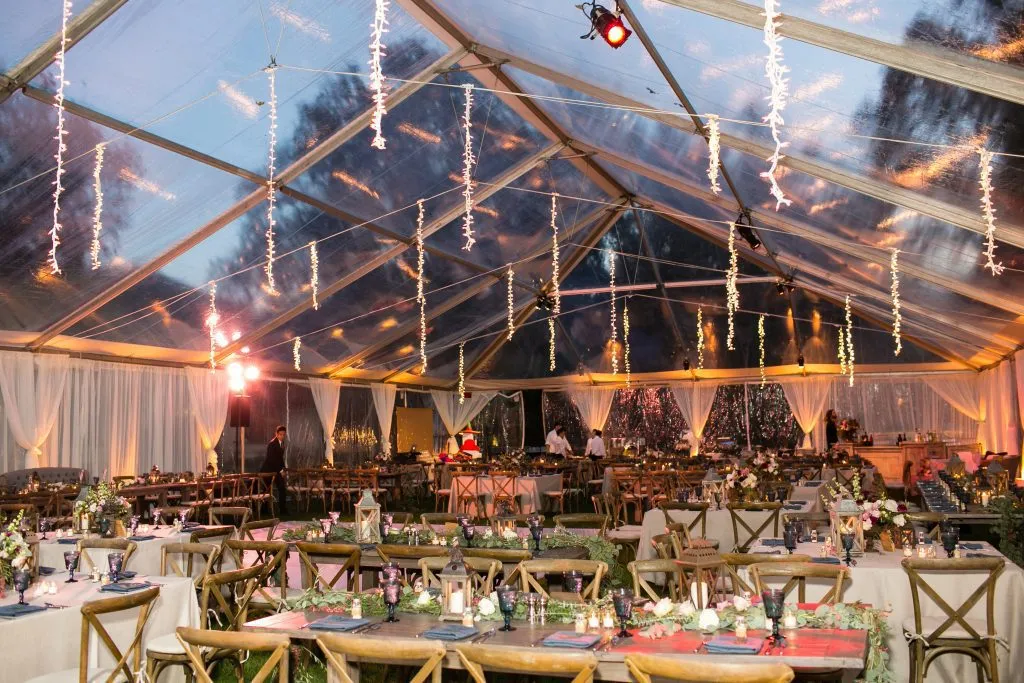
Selecting the right tent style is essential for event success. Frame tents offer stability for professional gatherings, while pole tents create an elegant atmosphere for formal events. Sailcloth tents provide a romantic setting for outdoor celebrations. Each tent type offers unique features to enhance various event ideas and layouts.
Choose Optimal Frame Tents for Professional Gatherings
Frame tents offer stability and versatility for professional gatherings. These structures provide a clean, modern look suitable for corporate events, trade shows, and conferences. Event planners can customize frame tents with various sizes and configurations to accommodate different group sizes and presentation needs. The following table outlines key features of frame tents for professional events:
| Feature | Benefit |
|---|---|
| Modular design | Flexible space configuration |
| Sturdy framework | Withstands weather conditions |
| Clear span interior | Unobstructed views and layout options |
| Multiple sidewall options | Customizable climate control |
Utilize Pole Tents for Formal Events
Pole tents offer an elegant solution for formal events, providing a classic peaked-roof silhouette that creates a grand atmosphere. These tents excel in outdoor settings, with center poles supporting the structure and creating a spacious interior. Event planners often choose pole tents for weddings, galas, and upscale corporate functions due to their versatility and aesthetic appeal. Key advantages of pole tents for formal events include:
- Dramatic high peaks for visual impact
- Large open spaces for flexible layouts
- Natural light penetration through translucent fabric
- Cost-effective option for large gatherings
- Ability to accommodate various flooring options
Select Sailcloth Tents for Outdoor Celebrations
Sailcloth tents provide an elegant and airy option for outdoor celebrations. These tents feature translucent fabric that allows natural light to filter through, creating a warm and inviting atmosphere. Event planners often choose sailcloth tents for beach weddings, garden parties, and summer gatherings due to their versatility and aesthetic appeal. The tent’s distinctive peaked design and nautical-inspired look add a touch of sophistication to any outdoor event.
Create Effective Layouts for Specific Event Types
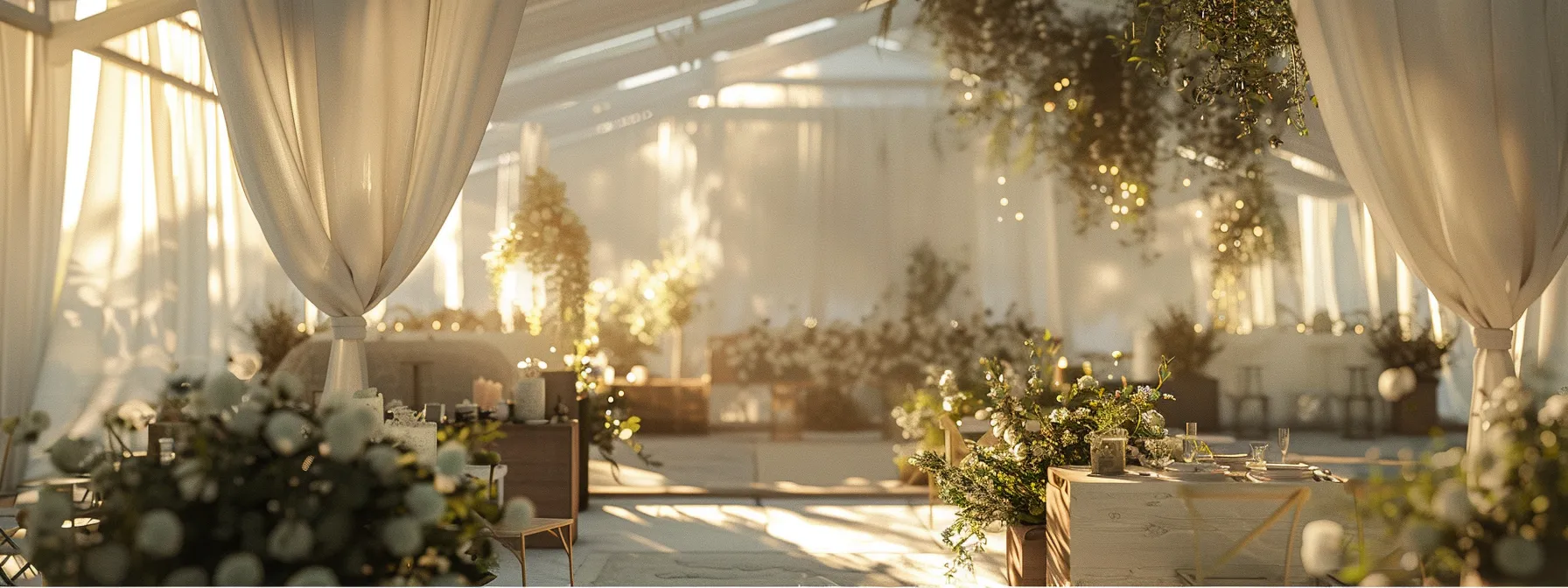
Creating effective layouts for specific event types is essential for successful tent-based gatherings. This section explores how to design wedding and reception spaces, structure corporate event environments, and organize festive gatherings and parties. Each event type requires unique considerations to ensure optimal flow, functionality, and guest experience within the tent setting.
Design Wedding and Reception Spaces
Designing wedding and reception spaces in tents requires careful planning to create a memorable experience. Event planners must consider the ceremony area, reception layout, and dance floor placement to ensure smooth transitions between activities. A well-designed layout accommodates guest seating, catering stations, and entertainment areas while maintaining an elegant atmosphere. The following table outlines key elements for wedding and reception tent layouts:
| Area | Considerations |
|---|---|
| Ceremony | Aisle width, seating arrangement, altar placement |
| Reception | Table sizes, buffet or seated dinner setup, bar location |
| Dance Floor | Size, proximity to music, lighting options |
| Lounge | Comfortable seating, cocktail tables, ambient lighting |
Structure Corporate Event Environments
Structuring corporate event environments in tents requires careful planning to create professional and functional spaces. Event planners must consider presentation areas, networking zones, and breakout rooms to facilitate effective communication and collaboration. A well-designed layout incorporates technology needs, such as audiovisual equipment and charging stations, while maintaining a polished atmosphere that reflects the company’s brand. Proper space allocation ensures smooth traffic flow and comfortable seating arrangements for attendees throughout the event.
Organize Festive Gatherings and Parties
Organizing festive gatherings and parties in tents requires strategic layout planning to ensure a lively atmosphere and smooth guest flow. Event planners must balance entertainment areas, food stations, and seating arrangements to create an engaging environment. Effective layouts for festive events incorporate elements such as dance floors, bars, and interactive spaces while maintaining clear pathways for easy movement. Key considerations for organizing successful tent-based parties include:
- Centralized dance floor with surrounding seating
- Multiple food and beverage stations to reduce congestion
- Lounge areas for casual conversation
- Designated spaces for entertainment or activities
- Proper lighting sets the mood and enhances safety
Incorporate Functional Areas Into Tent Layouts
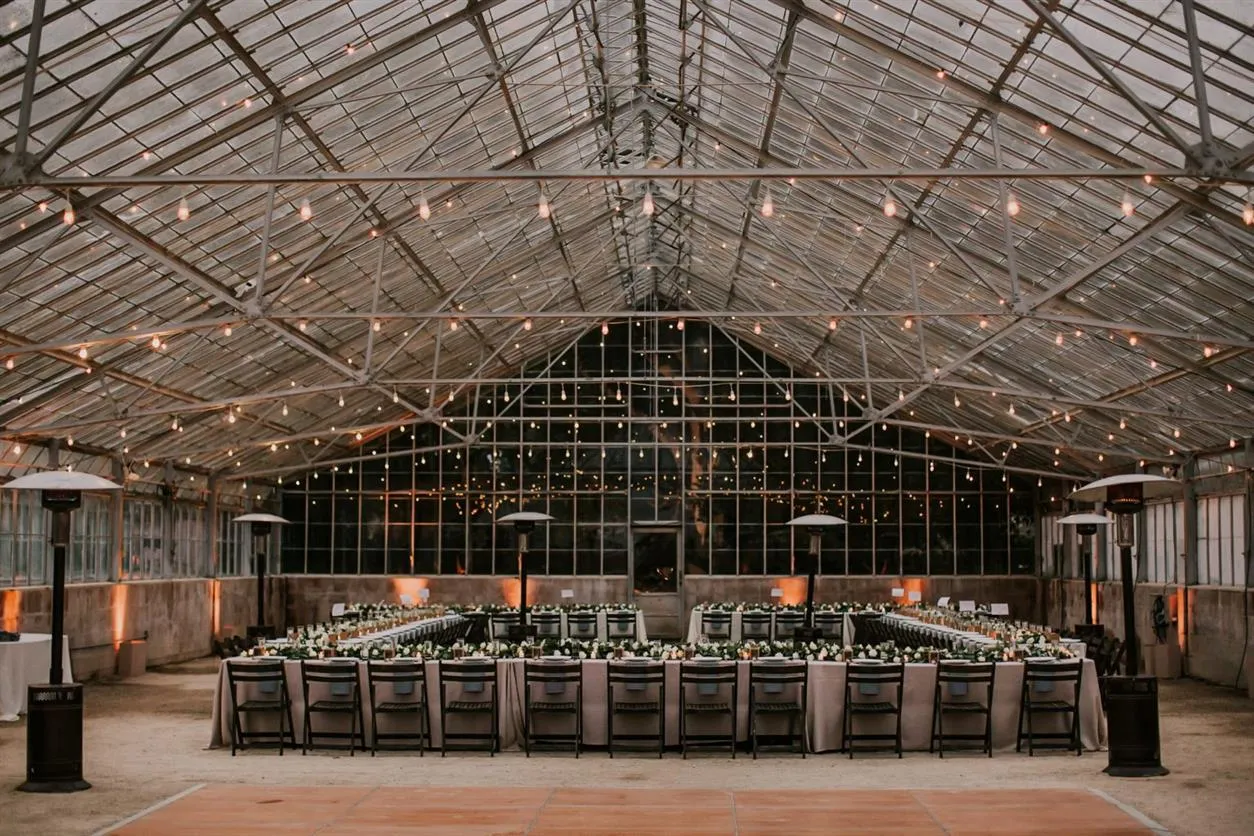
Incorporating functional areas into tent layouts is essential for event success. This section explores how to set up dining areas for efficient meal service, designate dance floors for entertainment, and create lounging spaces for guest relaxation. Each area serves a specific purpose, contributing to the overall flow and enjoyment of the event.
Set Up Dining Areas for Meal Service
Setting up dining areas for meal service in tent layouts requires careful planning to ensure efficient service and guest comfort. Event planners should consider table arrangements that allow easy server access and provide ample space between tables for guest movement. The placement of buffet stations or service areas near kitchen facilities can streamline food delivery and minimize disruptions during the event.
Designate Dance Floors for Entertainment
Designating dance floors for entertainment is a crucial aspect of tent layout design. Event planners should position the dance area centrally, ensuring easy access for guests and visibility from most seating areas. The size of the dance floor depends on the number of attendees and the event type, with a general rule of thumb being 2-4 square feet per guest. Proper flooring materials, such as interlocking panels or hardwood, provide a stable surface for dancing while protecting the ground underneath.
Create Lounging Spaces for Guest Relaxation
Creating lounging spaces for guest relaxation enhances the overall event experience. Event planners can designate quiet areas within the tent layout, featuring comfortable seating options such as sofas, armchairs, and ottomans. These spaces provide guests with a place to rest, engage in conversations, or simply take a break from the main activities. Strategically placing lounge areas near the tent’s perimeter allows for easy access while maintaining the flow of the central event space.
Use Visual Elements to Enhance Tent Layouts
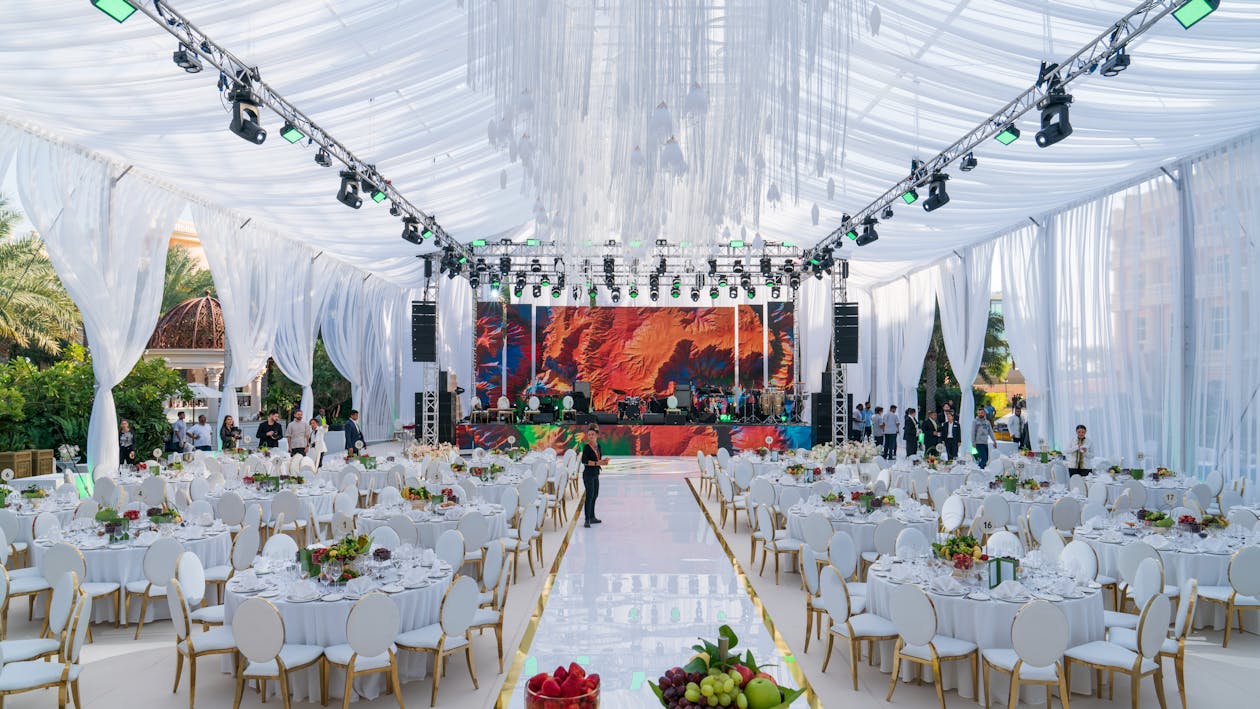
Visual elements play a key role in enhancing tent layouts for various events. Integrating decor and theme creates a cohesive atmosphere. Lighting sets the mood and ambiance, while signage ensures easy navigation for guests. These elements work together to elevate the overall event experience and support the intended layout design.
Integrate Decor and Theme Into the Space
Integrating decor and theme into the tent space enhances the overall event atmosphere. Event planners carefully select decorative elements that align with the event’s theme, such as floral arrangements, table centerpieces, and fabric drapes. These visual components create a cohesive look throughout the tent, tying together different functional areas and reinforcing the event’s purpose. Effective theme integration considers the following aspects:
- Color schemes that complement the tent style
- Thematic props and displays
- Coordinated linens and tableware
- Custom signage and banners
- Strategic placement of decorative lighting
Leverage Lighting for Ambiance
Leveraging lighting for ambiance plays a crucial role in enhancing tent layouts. Event planners use various lighting techniques to create the desired atmosphere, from soft, warm glows for intimate gatherings to vibrant, colorful displays for lively parties. Strategic placement of uplights, string lights, and chandeliers can highlight key areas within the tent, accentuate decor elements, and guide guest movement throughout the space.
Include Signage for Easy Navigation
Including signage for easy navigation is essential in tent layouts for various events. Clear, strategically placed signs help guests locate key areas such as entrances, exits, restrooms, and specific event spaces. Event planners use a combination of freestanding signs, hanging banners, and digital displays to guide attendees efficiently through the tent layout. Effective signage enhances the guest experience by reducing confusion and minimizing disruptions during the event:
| Sign Type | Purpose | Placement |
|---|---|---|
| Directional Arrows | Guide guests to specific areas | Pathways and intersections |
| Area Labels | Identify functional spaces | Entrances to designated areas |
| Information Kiosks | Provide event details and maps | Central locations |
| Emergency Exit Signs | Ensure safety compliance | Near all exit points |
Conclusion
Tailoring tent layouts to suit various event types is essential for creating successful and memorable gatherings. By carefully considering factors such as guest needs, tent styles, and functional areas, event planners can optimize space utilization and enhance the overall experience for attendees. Incorporating visual elements like decor, lighting, and signage further elevates the ambiance and facilitates smooth navigation within the tent. Ultimately, a well-designed tent layout ensures comfort, efficiency, and enjoyment for guests, contributing significantly to the event’s success and leaving a lasting positive impression.






